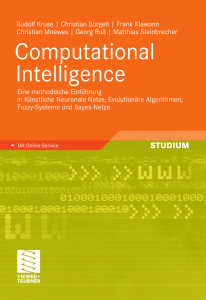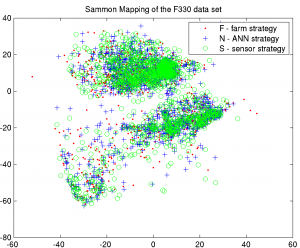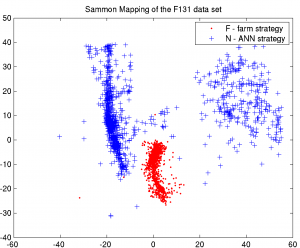Last week I also participated in the MLDM 2009, which is a biennial conference for Machine Learning and Data Mining, organised by the same team as the ICDM series. My paper was accepted as a poster presentation and I also chaired a session on association rules, which happens to be strongly related to my diploma thesis. The conference was a bit larger than the ICDM, with around 60 scheduled talks, of which 48 took place due to dropouts. It was a bit more theoretical than the ICDM, but still really worth it since usually the data mining problems were closely motivated by real-world problems.
Read the rest of this entry »
Seiten
Kategorien
- agriculture
- conferences
- data mining
- Deutsch
- English
- Environmental Data Mining
- go8-coop
- ICDM 2008
- ICDM 2009
- ICDM 2010
- ICDM 2011
- ICPA 2010
- IDA 2009
- IDA 2010
- IEEE-ICDM10
- IFCS 2009
- IFIP AI-2008
- IPMU 2008
- IPMU 2010
- MLDM 2009
- neuroscience
- personal
- R
- SGAI AI-2007
- SGAI AI-2008
- SGAI AI-2009
- sports science
- Uncategorized
Our recent book
 Data Mining et al — RSS feed
Data Mining et al — RSS feedMeta
Report: MLDM 2009
ICDM2009 / MLDM2009
This week saw me busy preparing for next week’s two conferences ICDM2009 and MLDM2009, both taking place at the same location in Leipzig consecutively.
Read the rest of this entry »
ICDM/MLDM 2009, both accepted
Both my publications that I’ve handed in for the ICDM and MLDM conference have been accepted. The first one with two overall positive reviews, and the second one with just one review allowing it in for the poster session.
Apart from this, there’s not much to report, except that I’m currently converting (the scripts) to R for doing the computing stuff. Seems even more high-level and more abstract than matlab. And: it’s GNU and I can use vim for script editing and running.
Extended Deadlines MLDM/ICDM
The deadlines for ICDM 2009 and MLDM 2009 have been mysteriously extended such that they coincide with the written examination for the course on Intelligent Systems, which I’m teaching this term. Nevertheless, the MLDM paper is almost finished whereas most of the work for the ICDM 2009 paper has been done, but has to be documented and ‚paperized‘ appropriately.
For the MLDM work, which is about applying Sammon’s mapping and Self-Organizing Maps to the agriculture data, there were some changes. For example, one of the data sets contains data for different fertilization strategies. This data set can also be split into two sub-data sets, one for each strategy, for in-depth analysis. One of the strategies was to use a neural network for yield prediction — and it has been unclear what kind of connections the NN has learnt so far. The idea is to visualize the data that the NN has used for training and prediction. So, projecting those data onto a mapping could yield interesting results as to the internal workings of the NN. This is more or less what the paper is about. Useful, interesting, and encouraging.
Without further commenting, here are some graphs:
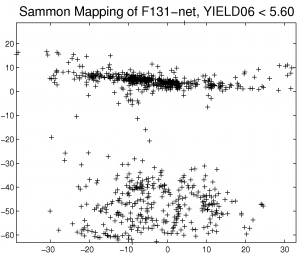
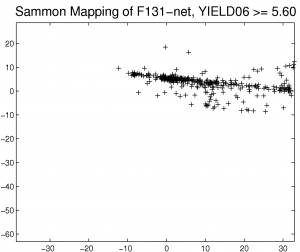
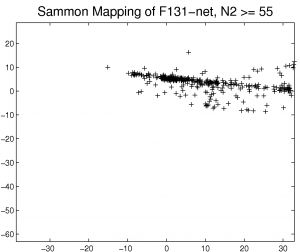
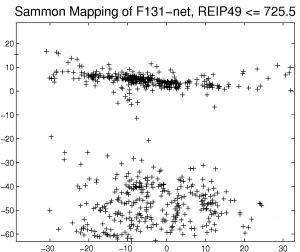
I do see correlations. What about you?
Sammon’s mapping for visualization
While everyone else is at home, I rode to work and implemented Sammon’s mapping on two of the agriculture data sets. The data set descriptions are in the paper I presented at the SGAI. One of the sets has three farming strategies, the other one just two. I decided to apply the dimensionality reduction of Sammon’s mapping and it turns out that it works quite well for both of the data sets, although the interpretation is much easier for the second one. For starters, here are the plots:
Data Mining et al is powered by WordPress | Using Tiga theme with a bit of Ozh + WP 2.2 / 2.3 Tiga Upgrade
